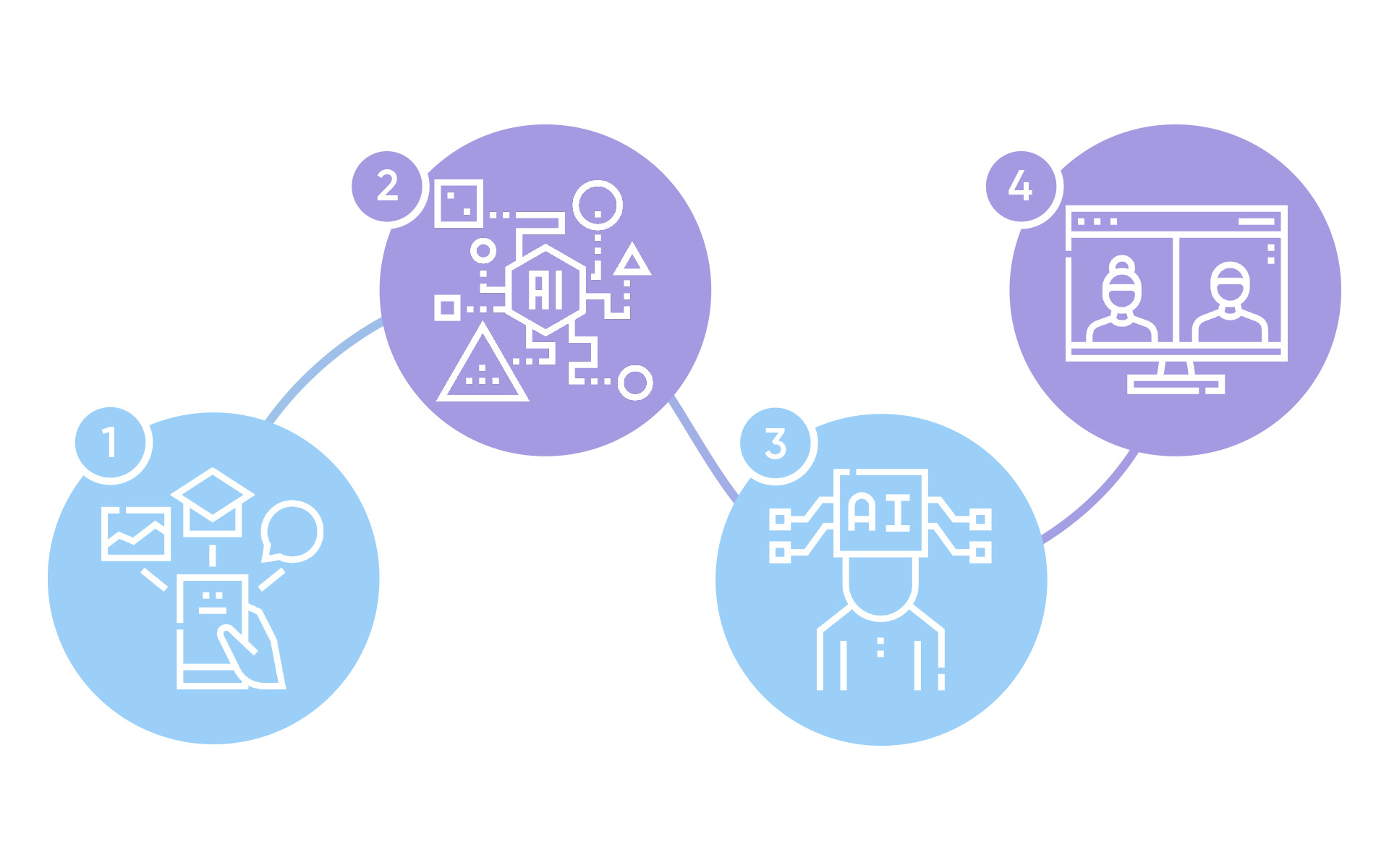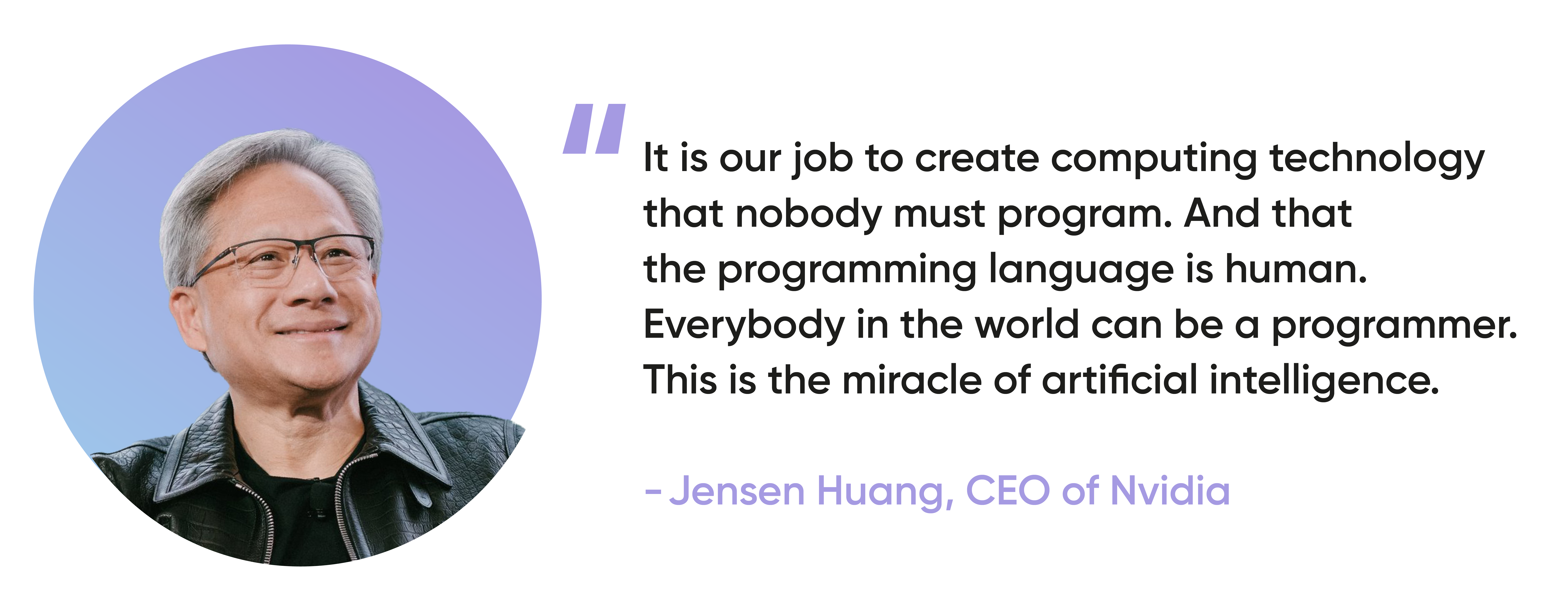The changes in software development are as fast as light. Here's what you can expect from SaaS in 2024.

Over time, I have observed the rapid growth of empowering SaaS (Software as a Service) platforms, evolving from primitive web applications to sophisticated ecosystems with the latest tech under the hood.
And that's why I predict 2024 is the year in which we will witness the rise and fall of SaaS providers.
Among all other types of software products, SaaS is the one to develop the fastest with major changes in using the Public Cloud Services End-User Spending Forecast (Billions of U.S. Dollars) worldwide.
| Services | 2023 | 2024 |
| Cloud Application Infrastructure Services (PaaS) | 145,320 | 176,493 |
| Cloud Application Services (SaaS) | 205,221 | 243,991 |
| Cloud Business Process Services (BPaaS) | 66,339 | 72,923 |
| Cloud Desktop-as-a-Service (DaaS) | 2,784 | 3,161 |
| Cloud System Infrastructure Services (IaaS) | 143,927 | 182,222 |
| Total Market | 563,592 | 678,790 |
In my perspective, the SaaS sector is on the cusp of an extraordinary surge, projected by a Gartner report, is predicted to reach $678.8 billion by 2024, which is a promising investment for SaaS’ enormous growth.
Besides that, the total increase in the utilization of cloud-based systems that have great scalability, flexibility, and cost-effectiveness has been driving those figures.
According to a bright future estimate, worldwide IT spending for public cloud services in 2024 will go up 20.4% and reach the amount of $678.8 billion, compared with $563.6 billion in 2023. Cloud providers are becoming some of the most important components of businesses' infrastructure and modern technologies like generative AI.
Table of contents:
Rise of AI and Machine Learning
Shift Towards Microservices Architecture
Emergence of Low-Code/No-Code Platforms
User Experience with UI/UX Innovations
SaaS Sustainability and Social Responsibility
Future-Proofed SaaS Business of Tomorrow
Rise of AI and Machine Learning
AI and ML development are certainly no longer as futuristic as they used to be, they are the present now. If you can look through my lenses these technologies transform the SaaS sector by being smart, efficient, and personalized.
For example, many companies including eWay System are for example deploying support chatbots using AI to provide quality customer service.
Step 1: Research the Areas Where AI Can be Effective
The cell process: begin by establishing the available areas within your SaaS offering where automation, customization, and predictive analytics can make an enormous difference.
These examples are just a few of many areas in which AI could be used: customer service can be handled by chatbots, or operational efficiency can be improved with automated billing systems.
Step 2: Pick the Correct AI Technologies
One must be aware that not all artificial intelligence is equally capable. What becomes important here is choosing the right AI technologies that can meet your enterprise-specific goals.
What I think is that it's artificial intelligence like natural language processing (NLP) for chatbots or machine learning (ML) algorithms for data analysis. The core considerations are significance and influence.
Step 3: Incorporate AI as a Functionality of Your SaaS
So, for me, it all starts with connecting the data. AI turns to massive amounts of data to train and make forecasts. The establishment of an effective data gathering, and organization strategy is necessary.
Afterward, glide your AI initiatives in enclosed environments before you step into generalized usage.
Step 4: Generate Customers’ Insights and Personalization
Analyze the data coming from your customers through AI. You can build a business model that recognizes trends and behavior changes to help improve the customer experience. Netflix is one of the vital ones, gathering and analyzing the viewing data, which shapes the suggestion system and changes the whole user experience.

Shift Towards Microservices Architecture
Let's say you're working on a complex LEGO project. Instead of constructing the puzzle, it gets divided into small, organized units that smoothly align and complete it. That is the nature of microservices; it is breaking your SaaS app into smaller services. Each works independently and acts together in unison.
Since this approach is highly scalable and flexible, there is no need to reboot or update the entire system whenever a small part of your app needs modification or enhancement. Companies that are well-known examples of microservices, like Netflix and Amazon, successfully scaled their enormous and wide platforms by this method.
Implement Microservices in Your SaaS Model
You don’t have to run such hard, arbitrary tasks of turning your system upside down or over in a matter of a day.
Start by pointing to a function of the monolithic application that might be suitable for more independently detailed treatment.
In my opinion, if your security system is user authentication or a notification service, this could be it. Netflix is proposing microservices to break down its system into parts and scale it for innovative purposes, one part at a time.
Best Practices for Implementing Microservices
Define Clear Interfaces
Make sure every microservice has a well-delineated API so they can collaborate smoothly, having the risk of getting entangled.
Embrace DevOps
Automation of deployment, testing, and scaling processes improves things and helps achieve both smooth running and speed.
Monitor Religiously
You can use Prometheus or NewRelic to monitor how your microservices are doing. Thus, what you can do is to rid yourselves of any problems instead of issues.
Security and Privacy
Data infringements are on the front page today and often underline the role of security and confidentiality. SaaS platforms with a task to handle enormous quantities of personally sensitive data always turn out to be tempting targets for hackers.
Also, among the regulations like the General Data Protection Regulation (GDPR) in Europe and the California Consumer Privacy Act (CCPA), which regulates data privacy and privacy protection, SaaS companies are feeling more stress to enhance their security level.
The GDPR fine on British Airways for the data leak that hit not hundreds of thousands, but millions of customers are an awful and harsh reminder of both, financial and reputational risks that are at stake.
Strengthen Your SaaS Security Posture
Build a Robust Security Framework
Building a proper security architecture for your SaaS solution goes beyond the encryption and security system features. You must start security measures and system audits to determine gap areas.
Next, develop a specific list of security rules and guidelines for your team to adhere to.
Privacy by Design
In my approach, implementing privacy by design means embedding privacy aspects in all product development steps. And no, it is not just a matter of compliance with regulations. It is a way of educating and gaining your users' confidence.
Regulations enforcing Compliance as a competitive advantage
Amidst a market where people are becoming more privacy-conscious, the fact that you are compliant with regulations like GDPR and CCPA is an advantage over the competition. It surely demonstrates that you care about your users’ privacy and hold data protection high.
Emergence of Low-Code/No-Code Platforms
The no-code/low-code platforms should be regarded as the 'fresh air' for businesses, which infuses them with the required dynamism and flexibility to keep pace.
These platforms allow diverse people to develop software in fast deployments and iterations on numerous projects, bypassing the need for deep coding knowledge. In layperson's terms, they are nothing more than the VIP sections of a software expressway that enable you to change and grow as you wish!
Few examples:
- Through Airtable, a no-code platform, Condé Nast Corporation has become efficient in managing hundreds of thousands of digital assets.
- The other such powerful tool, Zapier, allows organizations to have automated workflows. For example, it helps Spotify flow through processes within the company without coding.

Integrating Low-Code/No-Code into Your Strategy
Choosing the Right Platform
Selecting a low-code/no-code platform that meets your business needs is more about understanding those needs and then associating them with the capability of that platform.
Remember factors like ease of use, compatibility, and expandability while you choose your technology.
Empower Your Team
The talent available for software development using low-code/no-code platforms provide an ideal workplace for non-technical team members to contribute.
Here's a quick step-by-step framework:
- Identify Champions: Select eager learners from non-technical teams.
- Provide Training: Utilize platform resources to train them.
- Start Small: Begin with minor projects to build confidence.
- Iterate and Improve: Encourage feedback and continuous improvement.
User Experience with UI/UX Innovations
In my view, the realm of Software as a Service (SaaS) is witnessing an undeniable shift where efficient and effective web design emerges as a critical determinant that could potentially seal or spoil a deal. Along with the development of technologies, it is the users' expectations that must also be improved.
Thirst for simplicity while at the same time requiring efficiency—a golden balance that no one can refuse, unquestionably.
Again, eWay-CRM serves as an outstanding example of how to get this right: a modern interface that makes the process of communication clear and straightforward without sacrificing rich functionality.
Modern Design Principles
Today's UI and UX design concepts suggest starting with a clean and minimalist layout. This implies using a clean and minimalist layout with intuitive navigation and responsive design that provides great experiences on various devices and screen sizes.
User Feedback
Central to my belief in continuous improvement in the UI/UX is to take your users' feedback into account. Incorporate feedback loops and utilize tools like UserTesting or Hotjar to gather relevant information and understand user behavior.
This method has been a key element for companies like Airbnb, which is always improving their user experience. They always consider the feedback from the guests and hosts. The platform keeps up with the top-notch accommodation-sharing industry.

SaaS Sustainability and Social Responsibility
With climate change and the environment at the epicenter of current discussions, SaaS ventures take a key role in serving as an example. Beyond the paper use limitation, sustainability in the SaaS industry means efficient use of energy, the modernization of servers, and the promotion of green initiatives.
Take Google Cloud, for example; it is unique in its efforts to create energy-efficient data centers and be consistent with 24/7 carbon-free energy. This not only takes care of the environmental impact but also echoes eco-friendly consumers.
Steps to Minimize Environmental Footprint
| Action Step | Description |
| Optimize Server Usage | Implement server virtualization and use energy-efficient hardware to reduce energy consumption. |
| Cloud Efficiency | Choose cloud providers committed to renewable energy and carbon neutrality. |
| Sustainable Practices | Adopt office practices that reduce waste and energy use, such as remote work policies. |
Sustainability as a Brand Value
Sustainability plays a significant role in strengthening your SaaS brand identity. Transparently broadcast your sustainable practices and achievements. This way you will ensure that you appeal to customers who consider environmental responsibility to be a top priority.
Future-Proofed SaaS Business of Tomorrow
As I've passed through SaaS transformative trends, these three factors, innovation, adaptability, and sustainability, are maintaining their relevance and are essential to thriving.
You must leverage artificial Intelligence, microservices, security, and low-code/no-code platforms with the priority of considering user experience and ecological sustainability.
Try to think about my ideas and adapt them to create a robust, future-proofed SaaS business of tomorrow. Or be left behind.











